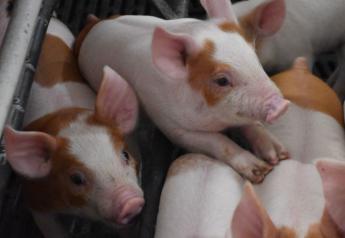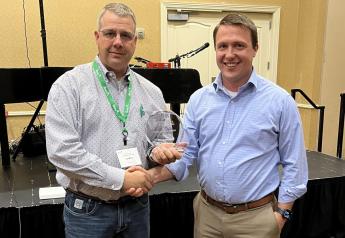A Multidimensional Approach to Sustainability in the Swine Industry

By Suzanne Leonard, North Carolina State University
Sustainability can sometimes feel like a fluid concept, but the National Pork Board sums it up well as “meeting the needs of the present without compromising the ability of future generations to meet their own needs.” As an industry, we have the privilege and responsibility to be good stewards of some of humanity’s most important resources, namely animals, air, water, soil and energy.
Improvements in swine genetics have created prolific, highly efficient pigs while refined nutrition allows those animals to perform at their best. Improved pig performance and efficiency with fewer input resources improves sustainability.
Factors beyond the pigs’ breeding and feeding can also play important roles in their production efficiency. Proper facilities and environments allow the pigs to spend less energy on maintenance and thermoregulation and more energy on growth and development. Beyond proper environmental conditions, good facility management can further improve sustainability by reducing energy, feed and water usage.
A 2015 study of Midwest swine facilities by Sharpe et al. reported that on average, per head energy usage was 11.6 kilowatt hour (kWh) per weaned pig in farrowing, 2.2 kWh per nursery pig, and 14.4 kWh per grow-finish market pig for mechanically ventilated facilities. In a typical gestation and farrowing facility, heat lamps account for approximately 60% of electricity consumption.
Utilizing modern, energy efficient heat lamps with thermostats to decrease temperature as piglets grow can reduce heat lamp electricity consumption by 20%, studies show. Heat mats can further reduce energy usage by 32-73%. In a grow-finish barn, about 72% of electricity used was for mechanical ventilation. Regardless of ventilation type, proper temperature offsets and differentials can improve indoor conditions and reduce electricity usage. Research shows a mere 10% overventilation rate can increase LP consumption by 27% during minimum ventilation conditions, highlighting the importance of fine-tuning these systems.
Optimizing resource use can also be achieved by proper feeder and drinker settings. Especially in finishing pigs, managing the amount of feed pan coverage can reduce pellet sorting and wastage by approximately 3% while providing the pigs with appropriate nutrients for growth. Making sure all drinkers in the barn are operating at the proper flow rate and pressures will allow the pigs to perform at their best, while fixing leaky drinkers will reduce water wastage.
There are many complex interactions between the animals, air, water, soil and energy in the swine industry. Because of this, our approach to sustainability is multidimensional. As an industry, each day we strive to produce safe, reliable pork for today’s consumers while ensuring future generations can do the same.
More from Farm Journal's PORK:
The Wild Wild West of Carbon Markets: Where Do Swine Genetics Fit?
Pig Farmers Commit to Sustainability: Here's the Proof
It’s Time to Get on the Bus: National Pork Board Unveils Sustainability Goals







